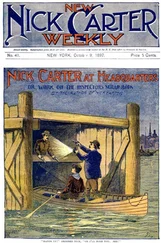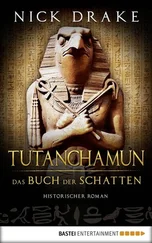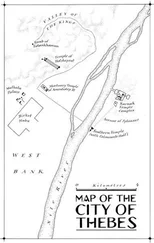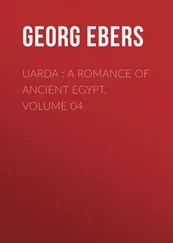Nick Drake - Egypt
Здесь есть возможность читать онлайн «Nick Drake - Egypt» весь текст электронной книги совершенно бесплатно (целиком полную версию без сокращений). В некоторых случаях можно слушать аудио, скачать через торрент в формате fb2 и присутствует краткое содержание. Жанр: Исторический детектив, на английском языке. Описание произведения, (предисловие) а так же отзывы посетителей доступны на портале библиотеки ЛибКат.
- Название:Egypt
- Автор:
- Жанр:
- Год:неизвестен
- ISBN:нет данных
- Рейтинг книги:5 / 5. Голосов: 1
-
Избранное:Добавить в избранное
- Отзывы:
-
Ваша оценка:
- 100
- 1
- 2
- 3
- 4
- 5
Egypt: краткое содержание, описание и аннотация
Предлагаем к чтению аннотацию, описание, краткое содержание или предисловие (зависит от того, что написал сам автор книги «Egypt»). Если вы не нашли необходимую информацию о книге — напишите в комментариях, мы постараемся отыскать её.
Egypt — читать онлайн бесплатно полную книгу (весь текст) целиком
Ниже представлен текст книги, разбитый по страницам. Система сохранения места последней прочитанной страницы, позволяет с удобством читать онлайн бесплатно книгу «Egypt», без необходимости каждый раз заново искать на чём Вы остановились. Поставьте закладку, и сможете в любой момент перейти на страницу, на которой закончили чтение.
Интервал:
Закладка:
But we know that, after further negotiations, a deal was agreed, and his son Zannanza was sent back to Egypt. But then, disaster struck, for Zannanza was murdered on the journey. The Hittites blamed the Egyptians, of course:
When Suppiluliuma heard of the slaying of Zannanza, he began to lament for Zannanza, and to the Gods he spoke thus: ‘Oh Gods! I did no evil, yet the people of Egypt did this to me, and they also attacked the frontier of my country.’
And in the end, what Ankhesenamun might have intended as a radical solution to the problem of her succession, and an attempt to forge a peace treaty through marriage between the two empires, actually raised the stakes of the conflict, and would eventually lead to one of the most famous confrontations of the Ancient World, the Battle of Qadesh, in 1274 BC.
The dramatic geopolitics of the region-and the sophisticated diplomatic methods of the time-make up the historical panorama of this novel; and I hope the resonances for our modern world, with today’s great powers vying for influence for commercial and political reasons in the Middle East, are part of the pleasure of the story. I’ve drawn on the best available historical and archaeological evidence to reconstruct both the daily world and the drama of high politics in Egypt, Syria and Hatti; and through the eyes and mind of Rahotep, Seeker of Mysteries, I have imagined my way into the events as they might have been experienced by the key players. Above all, I have attempted to tell the story behind Ankhesenamun’s mysterious letters, and to solve the twin mysteries of what might have compelled her to resort to such desperate measures, and of who killed Zannanza, and how, and why.
There is no evidence, other than the Hittite annals, for what happened on that return journey to Egypt. However, the Apiru (or Habiru in some translations) are well-attested in Egyptian, Hittite and Mittanian sources. Inanna (known in Akkadian as Ishtar) was the Sumerian goddess of love, fertility and war. She is stunningly depicted in the British Museum’s Queen of the Night relief (also known as the Burney Relief), winged, with taloned feet and a headdress of horns topped by a disc, her hands raised to the viewer. (You can see the life, head and heart lines on her palms.) She is holding rod-and-ring symbols. (These appear frequently; what they symbolize is uncertain, but they were only ever held by gods.) She is also attended by lions and owls, standing upon a range of stylized mountains. Her symbol was an eight-pointed star, which in the novel becomes the sign of the Army of Chaos. ‘She stirs confusion and chaos against those who are disobedient to her, speeding carnage and inciting the devastating flood, clothed in terrifying radiance,’ according to the ‘Hymn to Inanna’.
My character has borrowed the name and the powers of her goddess. For her, opium is both a commodity and something sacred. Of course psychotropic drugs, especially hallucinogens, have been used for religious and shamanic purposes from prehistoric times. ‘Soma’ was a ritual drink of great importance among the early Indo-Iranians, for whom it had the status of a god. There is wide evidence for the cultivation and ritual use of opium throughout the Ancient World-in Neolithic settlements in western Europe, and then in Mesopotamia where the Sumerians called it the ‘joy plant’. The Assyrians and Babylonians also collected ‘poppy juice’. The Ancient Egyptians used mandrake (a fruit) and the lotus (blue water lily) for medicinal narcotic purposes, although it must be said that any exact identification of opium within the herbals and medical papyri is problematic. One likely reference appears in the Ebers Papyrus as a ‘remedy for driving out much crying [in children]’. Base ring juglets, which were shaped to resemble an inverted poppy seed-pod, were probably used to import opium juice from Cyprus. It has also been proposed that opium and lotus flowers were mixed with wine for recreational as well as religious use, because the effective alkaloids were soluble in alcohol. In the novel, the ‘lost valley’ of the Army of Chaos is based on the Beqaa valley, where the production of wine and opium, and the rule of tribal militias, remain as active today as they were in the Late Bronze Age.
Alas, there is no other evidence at the time of writing to suggest what might have happened to Ankhesenamun after the murder of Zannanza. Horemheb (1323–1295 BC) succeeded Ay on the throne of Egypt, and she disappears completely from the historical record. And with her vanishing the great eighteenth dynasty of Akhenaten and Nefertiti, of Tutankhamun and Ankhesenamun, also came to an end; Horemheb, in the iconoclastic custom of new kings, dismantled their temples and usurped their monuments. And then he adopted as his heir a military officer from the delta (Horemheb’s own home), who would found a new dynasty: the Ramesside, which would comprise eleven rulers in the nineteenth and twentieth dynasties.
Ankhesenamun’s tomb and mummy have never been found. She was neither named nor depicted in Tutankhamun’s tomb, and despite the custom of burying personal items belonging to the Great Royal Wife in the tomb, nothing of hers was found there. The very absence of such things is significant. Similarly, as Ay’s Great Royal Wife, she should have been depicted in Ay’s tomb; but its walls are decorated with images of another wife, Tiy. KV63 (i.e. the sixty-third tomb to be discovered in the Valley of the Kings) lies near Tutankhamun’s, and some fragments of pottery suggest a possible connection to Ankhesenamun. Another recent nearby excavation has also been identified as a possible tomb: in February 2010, DNA tests encouraged speculation that one of two late eighteenth-dynasty female mummies from the Valley of the Kings might be Ankhesenamun. But as of the time of writing she remains missing. All we have are fragments of evidence, some glorious images of her such as that on Tutankhamun’s golden throne, and the great mystery of the Hittite letters. ‘I am afraid,’ she wrote; and she had good reason to be.
Интервал:
Закладка:
Похожие книги на «Egypt»
Представляем Вашему вниманию похожие книги на «Egypt» списком для выбора. Мы отобрали схожую по названию и смыслу литературу в надежде предоставить читателям больше вариантов отыскать новые, интересные, ещё непрочитанные произведения.
Обсуждение, отзывы о книге «Egypt» и просто собственные мнения читателей. Оставьте ваши комментарии, напишите, что Вы думаете о произведении, его смысле или главных героях. Укажите что конкретно понравилось, а что нет, и почему Вы так считаете.











